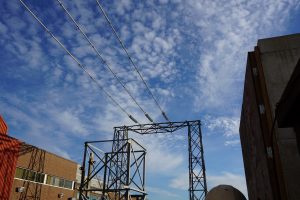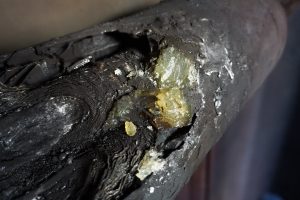

The first two discussions covered the extreme heat and blast from an arc flash. These elements of energy are extremely dangerous. What happens after the arc event is the topic of this discussion.
If an electrical arc situation predicts the need for a high level of protection, consideration must be given to not only the need for rated protective garments and equipment, but also for a determination of whether the situation is even safely possible. Even when proper PPE is used, flammability issues can cause dangerous breathing issues as well as burns. Arc flash in an enclosed environment is especially dangerous since burning releases noxious gasses, fumes and reduces the oxygen. The danger from this hazard affects rescuers as well as underground workers.

We have viewed arc blasts in an enclosed vault. The observation suggests specific safety preparations. A utility worker in a vault exposed to an arc flash/blast needs to have all AR (Arc Rated) materials protecting him. This includes both the wearing apparel as well as arc-protection blankets. Examine clothing labels to ensure that they meet approved AR safety standards. Arc-suppression/protection blankets must meet ASTM 2676. Also, have a backup air blower with fresh flex duct available, as the blast will destroy flexible ducting into a vault.
The summary of the first three articles on arc flash is (1) protect yourself from the blast. The pressure wave that results will move you into something – the question is what. (2) have protection from the heat. Although the blast is usually just a fraction of a second, the heat is sufficient to burn through most fabrics. (3) make sure that there are AR products protecting you. These products will quickly self-extinguish, reducing the amount of gasses produced and oxygen consumed.
